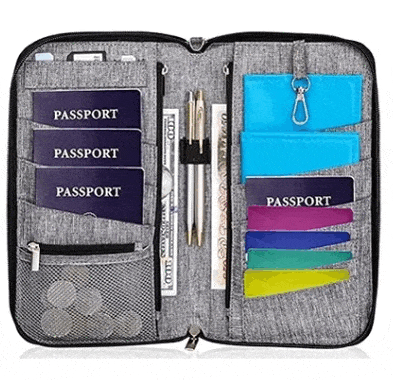Discover the perfect time to visit Portugal with this comprehensive guide. Learn about peak, shoulder & off-season weather, festivals, regional variations & travel tips.
Ultimate Guide: The Best Time to Visit Portugal for Every Traveler
Table of Contents
Introduction to Portugal and its Climate
Portugal, a coastal nation on the Iberian Peninsula, boasts a diverse and stunning geography that ranges from the verdant landscapes of the north to the sun-drenched Algarve in the south. With its prime location along the Atlantic Ocean, Portugal enjoys a temperate maritime climate, characterized by mild winters and sunny, dry summers. However, the country’s weather patterns can vary significantly from region to region, influenced by factors such as elevation, proximity to the coast, and the prevailing winds.
In general, Portugal experiences a Mediterranean climate, with hot, dry summers and mild, rainy winters. The northern regions, including Porto and the Douro Valley, tend to be cooler and wetter, with more rainfall throughout the year. Moving southward, the central regions, including Lisbon and the Alentejo, experience a more typical Mediterranean climate, with warm, dry summers and mild, wet winters. The Algarve, Portugal’s southernmost region, enjoys a sub-tropical climate, with hot, sunny summers and mild, relatively dry winters.

The best time to visit Portugal largely depends on your preferences and travel goals. Summer (June to August) is the peak season, attracting visitors seeking sunshine and beach vacations. Spring (March to May) and fall (September to October) are considered shoulder seasons, offering pleasant weather and fewer crowds. Winter (November to February) is the low season, with cooler temperatures and more rainfall, but also fewer tourists and lower prices.
Overall, Portugal’s diverse climate and geography offer something for every type of traveler, whether you’re seeking sun-drenched beaches, cultural explorations, or outdoor adventures. By understanding the country’s weather patterns and seasonal variations, you can plan your trip to Portugal at the optimal time for your desired experiences.
Best Time To Travel To Portugal | A Travel Guide Book

Comprehensive coverage for spending a week or more exploring Portugal.
Rick’s strategic advice on how to get the most out of your time and money, with rankings of his must-see favorites.
Top sights and hidden gems, from the bone chapel of Évora and the palaces of Sintra to seaside street food and lush vineyards
How to connect with culture: Chat with friendly locals over a glass of vinho verde, enjoy a dinner of fresh seafood stew, or spend an evening at a bluesy fado bar.
Beat the crowds, skip the lines, and avoid tourist traps with Rick’s candid, humorous insight
The best places to eat, sleep, and relax with a glass of local port and more.
Peak Season: Summer (June to August)
Summer is the peak season for travel to Portugal, when the country basks in warm, sunny weather and the beaches along the stunning coastline become a major draw. From June through August, visitors can expect long, sunny days with high temperatures ranging from the mid-70s to the mid-80s Fahrenheit (mid-20s to low 30s Celsius) across most regions.
While the summer months are ideal for beach vacations, particularly in the Algarve and along the central and northern coasts, the high temperatures can make sightseeing and outdoor activities in inland areas quite challenging. Cities like Lisbon and Evora can become uncomfortably hot during the day, with temperatures occasionally soaring above 90°F (32°C).
Despite the heat, summer is a popular time for festivals and cultural events throughout Portugal. The country comes alive with music, dance, and culinary celebrations, such as the Festas de Lisboa in June, the Festa do Marisco in Olhão (July), and the Feira Nacional da Agricultura in Santarém (June).
One downside of the summer months is the increased tourist crowds and higher prices for accommodations and flights. Popular destinations like the Algarve, Lisbon, and Porto can become quite crowded, and advance booking is essential for the best rates and availability.
If you plan to visit Portugal during the summer, be prepared for the heat by packing lightweight, breathable clothing and seeking out shade or air-conditioning during the hottest hours of the day. Early mornings and evenings are often the most pleasant times for outdoor activities and sightseeing.
Shoulder Season: Spring (March to May) and Fall (September to October)
The shoulder seasons of spring (March to May) and fall (September to October) are often considered the best times to visit Portugal. These transitional periods offer mild temperatures, fewer crowds, and lower prices compared to the peak summer months.
Spring in Portugal is a delightful time, with mild days and cool evenings. Temperatures typically range from the mid-50s to mid-70s Fahrenheit (12°C to 24°C). The countryside comes alive with blooming wildflowers, making it an ideal season for hiking, cycling, and exploring Portugal’s natural landscapes. Spring is also a great time to visit cities like Lisbon and Porto, as the weather is comfortable for sightseeing without the intense summer heat.
Fall, or autumn, is another fantastic time to visit Portugal. From September through October, the country experiences warm, sunny days with temperatures ranging from the mid-60s to mid-80s Fahrenheit (18°C to 30°C). The crowds of summer have dissipated, and travelers can enjoy popular attractions with fewer tourists. Fall is also an excellent season for wine tourism, as the grape harvest takes place in many of Portugal’s renowned wine regions, such as the Douro Valley and Alentejo.
During the shoulder seasons, visitors can often find better deals on accommodations and flights, as well as fewer crowds at popular attractions. However, it’s essential to be prepared for the possibility of rain, as spring and fall can be slightly wetter than the summer months.
Whether you prefer the mild temperatures of spring or the warm, sunny days of fall, the shoulder seasons in Portugal offer a delightful balance of comfortable weather, fewer tourists, and lower prices, making them an excellent time to explore this beautiful country.

Off-Season: Winter (November to February)
While winter may not be the most popular time to visit Portugal, the off-season months from November through February offer unique advantages for travelers willing to brave the cooler temperatures and potential rainfall. During this period, visitors can expect mild, rainy weather along the coast and cooler, drier conditions inland.
Temperatures in winter range from the mid-40s to mid-60s Fahrenheit (7°C to 18°C) in coastal areas like Lisbon and the Algarve, while inland regions like the Alentejo can experience colder nights, with temperatures occasionally dipping below freezing. Rain is more frequent during these months, particularly in the northern regions, but sunny days are still common, especially in the south.
One of the biggest advantages of visiting Portugal in winter is the significantly lower prices for accommodations and flights, as well as fewer crowds at popular attractions. This can be an ideal time for budget-conscious travelers or those seeking a more authentic, local experience without the hustle and bustle of peak season.
Winter is also a great time to explore Portugal’s rich cultural heritage, with many museums, galleries, and historic sites remaining open and less crowded. Visitors can enjoy indoor activities like wine tastings, cooking classes, and exploring the vibrant nightlife in cities like Lisbon and Porto.
Additionally, winter in Portugal offers unique experiences like witnessing the traditional Christmas celebrations, trying hearty seasonal dishes like caldo verde (kale soup) and bacalhau (salted cod), or even catching a glimpse of snow in the higher elevations of the Serra da Estrela mountain range.
While the weather may not be ideal for beach vacations, winter in Portugal can be a delightful time for cultural immersion, outdoor adventures like hiking or bird watching, and taking advantage of the lower prices and fewer crowds.
Best Amazon Travel Gadgets You Need!

Festivals and Events to Consider
Portugal is a country steeped in rich cultural traditions, and its calendar is filled with a diverse array of festivals and events that celebrate its history, cuisine, music, and more. Timing your visit to coincide with one of these vibrant celebrations can add an extra layer of excitement and authenticity to your travel experience.
One of the most famous festivals in Portugal is the Festa dos Santos Populares, a series of celebrations held in June to honor various Catholic saints. In Lisbon, the festivities reach their peak on the evening of June 12th, with vibrant street parties, traditional dances, and the iconic “marchas populares” parades.
For food and wine enthusiasts, the Festa do Vinho in Quinta da Avessada (June) and the Festa do Marisco in Olhão (July) are must-attend events. The former celebrates the region’s exceptional wines, while the latter is a delightful seafood festival featuring fresh catches, live music, and local handicrafts.
Music lovers should mark their calendars for the NOS Alive festival in Lisbon (July), which attracts world-renowned artists and bands, or the Festa da Música in June, when free concerts take over the streets of cities across Portugal.
For a unique cultural experience, consider visiting during the Festa dos Tabuleiros in Tomar (July), where local women carry elaborate bread sculptures on their heads in a centuries-old tradition, or the Festa de Nossa Senhora da Agonia in Viana do Castelo (August), which features colorful folklore and religious processions.
Autumn brings its own set of festivals, such as the Feira Nacional da Agricultura in Santarém (June), celebrating Portugal’s agricultural heritage, and the Festa das Vindimas (September/October) in various wine regions, where visitors can partake in grape harvesting and stomping.
No matter when you plan to visit, be sure to check the local events calendar, as Portugal’s festivals offer an unparalleled opportunity to immerse yourself in the country’s rich traditions and vibrant cultural tapestry.
You May Also Like: Complete Guide to Travel Essentials for Women
Weather Considerations by Region
While Portugal enjoys a generally mild and sunny climate, its diverse geography and varying elevations contribute to regional weather variations that are important to consider when planning your trip. Understanding the weather patterns of different regions can help you make the most of your time in Portugal and ensure a comfortable and enjoyable experience.
Algarve Region:
The southernmost region of Portugal, the Algarve, boasts a subtropical Mediterranean climate characterized by hot, dry summers and mild winters. Summer temperatures often exceed 90°F (32°C), while winters are relatively mild, with daytime highs averaging around 60°F (15°C). This region is ideal for beach vacations during the summer months, but the intense heat can make sightseeing challenging. Spring and fall offer more comfortable temperatures for exploring the region’s historic towns and natural parks.

Lisbon and Central Portugal:
Lisbon and the central region experience a typical Mediterranean climate, with hot, dry summers and mild, rainy winters. Summer temperatures can reach the mid-80s Fahrenheit (around 30°C), while winters are cool, with average highs in the mid-50s Fahrenheit (around 13°C). The moderate temperatures make spring and fall ideal seasons for visiting Lisbon and exploring the central region’s historic cities and wine regions.
Porto and the North:
The northern region, including Porto and the Douro Valley, has a more temperate maritime climate, with cooler temperatures and more rainfall throughout the year. Summers are warm but not excessively hot, with average highs in the mid-70s Fahrenheit (around 24°C). Winters can be quite rainy, with average highs in the mid-50s Fahrenheit (around 13°C). Spring and fall are great times to visit for mild weather and fewer crowds.
Inland Regions:
The inland regions of Portugal, such as the Alentejo and parts of the Centro region, experience a more continental climate, with hot, dry summers and cooler winters. Summer temperatures can soar above 100°F (38°C), while winters can be quite cold, with overnight lows occasionally dipping below freezing. The shoulder seasons of spring and fall offer the most comfortable weather for exploring these areas.
By understanding the regional weather patterns, you can plan your Portuguese adventure accordingly, whether you’re seeking sunny beach days, cultural explorations, or outdoor adventures in the countryside.
Tips for Planning Your Trip Based on the Season
Timing your visit to Portugal can greatly impact the overall experience and cost of your trip. To ensure you make the most of your Portuguese adventure, it’s essential to plan ahead and consider the following tips based on the season you choose to travel:
Summer (June to August):
- Book accommodations and flights well in advance, as this is the peak season for tourism in Portugal.
- Pack lightweight, breathable clothing and sun protection (hats, sunglasses, and sunscreen) to combat the intense summer heat.
- Plan to start your sightseeing early in the morning or later in the evening to avoid the midday sun.
- Consider staying in coastal regions like the Algarve or near beaches to take advantage of the warm weather and cooling ocean breezes.
Spring (March to May) and Fall (September to October):
- Aim to travel during the shoulder seasons to enjoy mild temperatures, fewer crowds, and potentially lower prices.
- Pack layered clothing to adapt to fluctuating temperatures and the possibility of rain showers.
- Book accommodations and activities in advance, as these seasons are growing in popularity among travelers seeking comfortable weather and smaller crowds.
- Explore outdoor activities like hiking, cycling, or wine tourism, as the weather is ideal for these pursuits.
Winter (November to February):
- Take advantage of significant discounts on flights and accommodations during the off-season.
- Pack warm clothing, including waterproof jackets and sweaters, as temperatures can be cool and rainy, especially in the northern regions.
- Plan indoor activities like visiting museums, galleries, and historic sites, which are less crowded during the winter months.
- Consider attending unique cultural events and festivals, such as Christmas celebrations or the traditional King’s Day festivities.

Regardless of when you visit, be sure to check local weather forecasts and adjust your plans accordingly. Portugal’s diverse climate and geography offer something for every type of traveler, so planning your trip around the season that best suits your interests and preferences can lead to a truly unforgettable Portuguese adventure.


